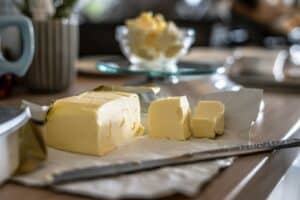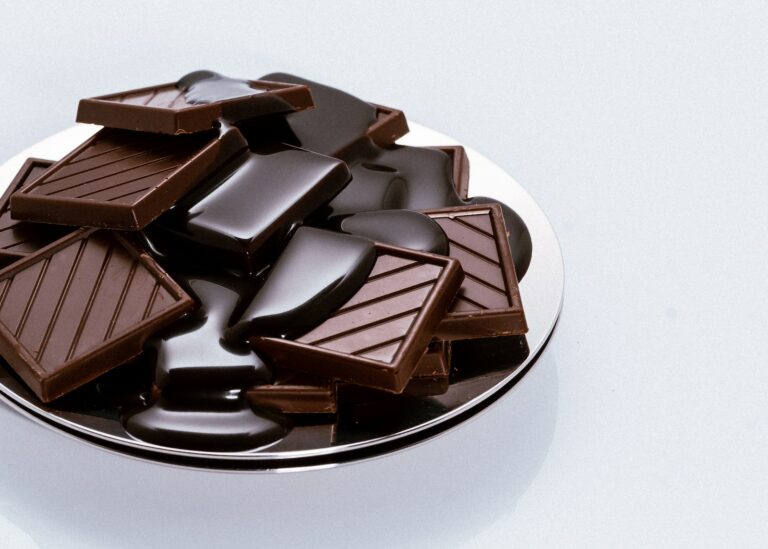Chocolate terminology is a vast and intricate world of words and phrases. From the moment one enters the fascinating domain of chocolate, they are engulfed in a sea of cocoa butter, milk chocolate, chocolate liquor, and cacao beans. With this glossary, we will delve into the depths of this delectable world, exploring the various terms and phrases that define the art of chocolate making.
Chocolate Terminology
Cocoa Butter: The smooth and creamy fat extracted from cacao beans is known as cocoa butter. It is an essential ingredient in chocolate-making, as it adds a richness and smoothness to the texture of the final product.

Milk Chocolate: A popular type of chocolate, milk chocolate is made by combining cocoa liquor, cocoa butter, milk solids, and sugar. It is known for its smooth and velvety texture, as well as its sweet and creamy flavor.
Chocolate Liquor: Obtained by grinding roasted cocoa beans into a paste, chocolate liquor is a key component in the production of chocolate. Despite its name, chocolate liquor does not contain any alcohol. Instead, it is composed of cocoa solids and cocoa butter.
Cacao Beans: The seeds of the cacao tree, cacao beans are the foundation of the chocolate industry. They are harvested, fermented, and dried before being roasted and ground to produce cocoa mass, cocoa butter, and cocoa powder.
Cocoa Powder: Made by grinding roasted cocoa beans and removing most of the cocoa butter, cocoa powder is a versatile and essential ingredient in baking and cooking. It is commonly used to add a rich chocolate flavor to desserts and beverages.
Bean to Bar: A term used to describe the process of making chocolate from scratch, starting with the cacao beans and ending with the final chocolate product. Bean to Bar chocolate makers take pride in controlling every step of the process, ensuring the highest quality chocolate.
Baking Chocolate: Also known as unsweetened baking chocolate, this type of chocolate has no added sugar and is primarily used for baking purposes. It has a strong and intense chocolate flavor, making it ideal for rich desserts and recipes.
Cacao Tree: The tropical tree known as Theobroma cacao is the source of cacao beans. It requires specific growing conditions, including a constant temperature and high humidity, to thrive and produce high-quality beans.

Cacao Butter: Another term for cocoa butter, cacao butter adds smoothness and richness to melted chocolate. It is extracted from the cocoa mass during the chocolate-making process.
Sugar Bloom: When chocolate is exposed to moisture, the sugar within it can crystallize on the surface, creating a white powdery appearance called sugar bloom. It does not affect the taste of the chocolate but may alter its texture.
Semisweet Chocolate: A type of chocolate with a slightly sweet flavor, semisweet chocolate contains a higher percentage of cocoa solids than milk chocolate. It is a popular choice for baking and cooking.
white chocolate: Although not technically chocolate, white chocolate is made from cocoa butter, sugar, and milk solids. It lacks cocoa solids but has a creamy and sweet flavor that appeals to many.
couverture chocolate: A premium quality chocolate with a high percentage of cocoa butter, couverture chocolate is favored by professional chocolate makers and artisans. Its high cocoa butter content gives it a glossy appearance and a smooth texture when melted.
Tempering Chocolate: A process of melting and cooling chocolate to specific temperatures in order to achieve the desired texture and appearance. Tempering ensures that the chocolate sets properly and has a smooth, shiny finish.
cacao nibs: Small pieces of roasted cocoa beans, cacao nibs are often used as an ingredient in baking or sprinkled on top of desserts for added crunch and flavor.
Sweet Chocolate: With a high sugar content, sweet chocolate is a type of chocolate that has a more pronounced sweetness compared to other varieties. It is often enjoyed as a standalone treat.
Unsweetened Chocolate: Similar to baking chocolate, unsweetened chocolate has no added sugar and is used primarily for cooking and baking.
Cocoa Mass: Also known as chocolate liquor, cocoa mass is the result of grinding roasted cocoa beans into a smooth liquid. It is composed of cocoa solids and cocoa butter.
Cacao Pods: The large, colorful fruits of the cacao tree are known as cacao pods. They can contain dozens of cacao beans and are carefully harvested by farmers.
Savory Chocolate Sauce: A unique combination of chocolate and savory ingredients, savory chocolate sauce is a versatile accompaniment to dishes such as roasted meats or vegetables. It adds depth and richness to savory recipes.

Milk Solids: The non-fat components of milk, including proteins and lactose, are known as milk solids. They are added to milk chocolate to create a creamy and smooth texture.
Chocolate Makers: The skilled artisans who work with cacao beans to produce chocolate are known as chocolate makers. They are responsible for every step of the chocolate-making process, from roasting the beans to tempering the final product.
Cocoa Liquor: Another term for chocolate liquor, cocoa liquor is the result of grinding roasted cocoa beans into a paste. It is the starting point for all chocolate production.
Roasted Cocoa Beans: Cacao beans that have been roasted to enhance their flavor and remove excess moisture. Roasting is a crucial step in chocolate-making, as it develops the complex flavors of the beans.
Cocoa Butter Percentage: The percentage of cocoa butter in chocolate determines its texture and meltability. Higher percentages of cocoa butter result in a smoother and creamier chocolate.
Cane Sugar: A type of sugar derived from sugar cane, cane sugar is commonly used in chocolate-making to add sweetness. It has a slightly different flavor profile compared to regular granulated sugar.
Light Colored Chocolate: Chocolate that has a lighter shade, often due to a lower percentage of cocoa solids or the addition of milk solids. Light colored chocolate is often associated with a milder flavor.
Bitter Chocolate Liquor: A term used to describe chocolate liquor that has a higher cocoa solids content, resulting in a more intense and bitter flavor.
Chocolate Bloom: A phenomenon that occurs when chocolate is exposed to temperature fluctuations or moisture. It causes a dull, whitish appearance on the surface of the chocolate but does not affect its taste.
Forastero Cacao Beans: The most widely cultivated variety of cacao beans, Forastero beans account for the majority of the world’s chocolate production. They are known for their robust flavor and resistance to diseases.
Storing Loosely Wrapped Chocolate: To preserve the freshness and quality of chocolate, it is best to store it loosely wrapped in a cool, dry place. This prevents moisture buildup and potential flavor transfer.
